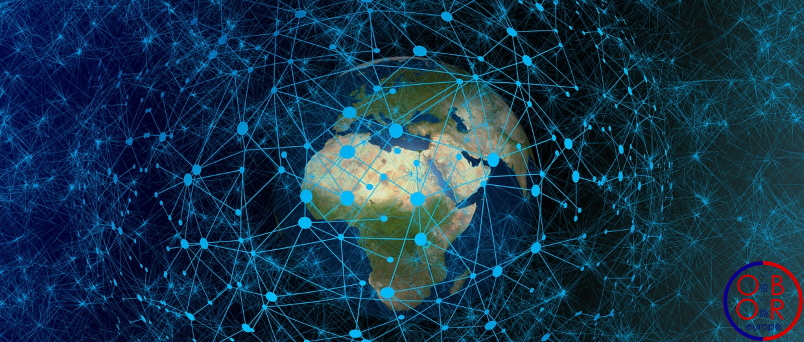
The “Blue Dot” network developed by the United States is not the only connectivity project unveiled this fall. In late September 2019, on the occasion of the EU-Asia Connectivity Forum, Jean-Claude Juncker, President of the European Commission and Abe Shinzo, Japanese Prime Minister, announced the launch of the Partnership on Sustainable Connectivity and Quality Infrastructure.
This agreement between the European Union and Japan aims to coordinate their efforts in connectivity projects in Europe, Asia and Africa. This partnership covers many aspects such as energy, transport, new technologies, and cultural exchanges. Is this a possible alternative to the BRI as some media have announced, or a complementary project?
The Partnership on Sustainable Connectivity and Quality Infrastructure
This project is the result of the rapprochement between Brussels and Tokyo, and follows the EU-Japan Economic Partnership Agreement which entered into force in February 2019, thus creating one of the largest free trade zones in the world. Through this project, the EU and Japan want to respond in their own way to the Asian Development Bank’s concerns about infrastructure needs on the Asian continent. According to the ADB, Asia would require nearly $ 22 trillion in infrastructure investment by 2030.
The EU-Japan connectivity partnership will allow the financing of certain infrastructure notably with the participation of private financial institutions. Facing a difficult economic context, the EU has already announced that it will allocate up to 60 billion euros to this program, which seems to be a relatively modest budget compared to the hundreds of billions that China is investing in the BRI. The EU and Japan are committed to funding quality projects that would have a strong impact in terms of connectivity. While the BRI was initially criticized for possible debt problems in the host countries, Japan and the European Union will give their full attention to these issues. Thus, for Abe Shinzo, projects supported by this partnership will be transparent, fair, open to all, and should not weaken recipient states. The European Union and Japan both have strong experience in conducting cooperation projects. Greater coordination between the two powers would multiply results.
A strong dimension of this project will regard the digital economy and data so that European and Japanese companies can better defend their interests in the economy of tomorrow.
This new partnership follows the European-Asia Connectivity Strategy announced by the European Commission in September 2019. However, the concrete application of projects related to this strategy has been delayed.
What relationship with China?
First of all, this new program makes the EU more active on a continent that has long been neglected by Brussels. We can first analyze this agreement as the will of Brussels and Tokyo to weigh on the international affairs in a context of confrontation between China and the United States. With this new program, Japan and the European Union, both economic powers, but political dwarves, hope to receive greater attention from the rest of the world.
For the EU, this project, which aims to develop infrastructure in Asia and also in its immediate neighborhood (that is to say in the Western Balkans and the Caucasus), is a means of asserting itself in the face of other powers like China and Russia in areas it considers strategic. Since 1996, the European Union has financed its own transport infrastructure project (the Trans-European Transport Network), which in 2017 has been extended to the Eastern Partnership states and Balkan states. It is therefore a way of better connecting the Union with its immediate entourage, and investing in states that are destined to enter the EU, such as Montenegro, where China is also very present.
However, this project led by the European Union and Japan does not go against Chinese BRI. On the contrary, there is a willingness of these three powers to strengthen their cooperation.
With regard to Europe, at the last EU-China summit in April 2019, the two regions committed themselves to developing synergies between the Europe-Asia connectivity strategy, the trans-European transport network program and the “Belt and Road initiative”.
The new Europe-Japan Partnership on Sustainable Connectivity does not seem to have changed relations between Brussels and Beijing. Thus, on December 9, 2019, the new President of the European Council Charles Michel gave a call to Chinese President Xi Jinping. The two leaders pledged to strengthen relations between the EU and China. Xi Jinping also stated he wanted a possible Eu-China investment agreement to be signed as quickly as possible.
Today, a majority of EU member states have joined the Belt and Road initiative, and states that have not yet done so, such as Germany and France, have very large companies that are involved in BRI projects.
Japan, like the European Union, is not officially a member of the BRI, but its companies are actively involved in projects developed under the BRI framework. Furthermore, Beijing and Tokyo are thinking about strengthening cooperation to improve connectivity in Asia. By expressing its intention to participate in several projects in Asia such as the “Blue Dot” network or the Africa-Asia growth corridor, Japan wants not to be marginalized in Asian affairs.
A complementary project
As we have noted earlier, infrastructure needs are immense in Asia, and therefore the Partnership on Connectivity and the BRI can only be complementary. It is one tool among others to strengthen international exchanges. The European Union, Japan and China are all fighting against protectionism.
Each country can learn from each other. The EU and Japan can offer their experience and their high standards of governance, as for China, it can bring, among other things, its high degree of dedication and implication to quickly carry out quality projects.
For Beijing, the connectivity project launched by Brussels and Tokyo, which is still relatively vague, can be seen as a demand to participate multilaterally in the construction of the new Silk Roads.
Share the post "New responses to the Chinese BRI (2): the EU-Japan Partnership on Sustainable Connectivity"
